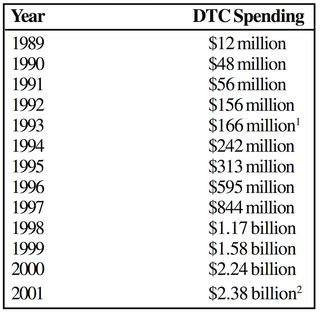Consumer Behavior
The Effort to Rid TV of Pharma Ads
Moves short of an outright ban may be most effective.
Posted May 15, 2016

The average American TV viewer can expect to watch up to 30 hours of prescription drug advertising each year, the editors of Scientific American noted recently, with drug makers spending $5.2 billion on such ads in 2015. That’s a 60 percent increase on the total spent four years earlier, with no signs of slowing down.
Ever since the FDA in 1997 relaxed its rules on pharmaceutical advertising, allowing drug makers to bypass healthcare providers and market directly to American patients and consumers, the amount spent on TV advertising in particular has risen incrementally by hundreds of millions of dollars each year, driving up medical costs that are then passed on to those patients and consumers, creating a climate rife with overdiagnosis and overmedication. The United States and New Zealand are the only advanced economies on the planet to allow such advertising.

There are clear signs, however, that doctors and the American public have reached a breaking point over the ads. Last November, the American Medical Association called for an outright ban on them, a position supported by the World Health Organization and other health agencies. Voicing concern about “the role that marketing costs play in fueling escalating drug prices,” AMA Board Chair-elect Dr. Patrice Harris noted at the time that “direct-to-consumer advertising inflates demand for new and more expensive drugs, even when these drugs may not be appropriate.”
A new STAT-Harvard poll indicates that the AMA’s position has clear majority support from the American public. According to the poll, 57 percent of Americans favored removing pharma ads from TV; 39 percent were opposed. 44 percent of those polled also said the FDA should be allowed not to approve a new drug if it considers the price too high.
Sentiment is one thing; making such initiatives legally binding is another. Following the AMA proposal, reaction from PhRMA, the organization representing the drug companies, was swift and fierce, signaling that the law violates First Amendment protections for commercial speech and would face legal challenges whose costs would once more be passed on to American patients.
But as the editors of Scientific American note in their editorial, moves short of an outright ban may be more effective. The industry’s ad-based tax deduction could be eliminated, a position advocated by Hillary Clinton. The FDA could also decide to hold drug makers to their claim that such advertising is an educational tool, a position requiring more-stringent standards than are currently enforced.
“Another constructive move,” they note, “would be for Congress to pass the Responsibility in Drug Advertising Act, introduced in February by Representative Rosa DeLauro of Connecticut. The bill would require a three-year moratorium on ads for new prescription drugs approved by the FDA.”
With prescription drug prices rising in tandem with pharma advertising, the status quo is clearly unsustainable and needs root-and-branch reform. “Many of the newest ads,” note the editors at Scientific American, “are for premium drugs for life-threatening diseases or rare conditions that can cost tens of thousands of dollars and require large, out-of-pocket patient co-payments. After seeing an ad, patients may press physicians for a prescription without understanding the complex criteria needed to determine eligibility for treatment.”
And press their doctor they do, in ways groups such as PhRMA are obviously keen to maintain. Last October, a Kaiser Family Foundation survey found that 28 percent of people who viewed a drug ad subsequently asked a physician about the medicine and that 12 percent walked out with a prescription.
christopherlane.org Follow me on Twitter @christophlane


